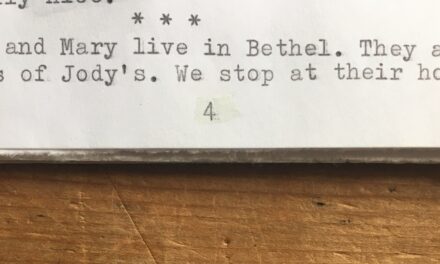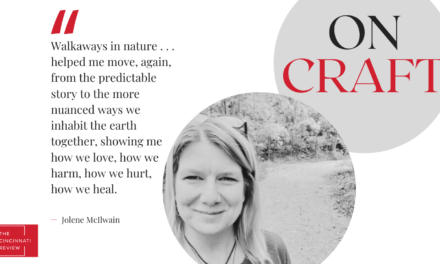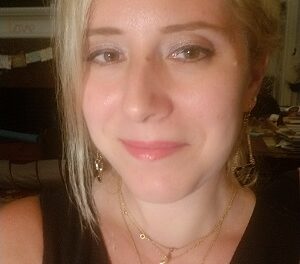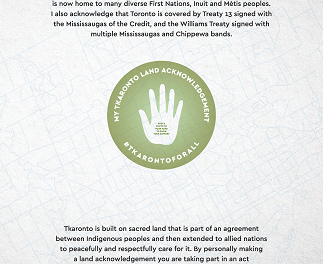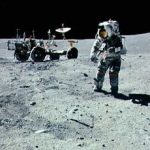 Since today is the 40th anniversary of Apollo 16’s return to Earth after a manned voyage to the moon, we wanted also to celebrate travel and experiencing new places. Conveniently, our following 8.2 contributors revealed that their work in our journal was influenced by various voyages (though none lunar):
Since today is the 40th anniversary of Apollo 16’s return to Earth after a manned voyage to the moon, we wanted also to celebrate travel and experiencing new places. Conveniently, our following 8.2 contributors revealed that their work in our journal was influenced by various voyages (though none lunar):
Anna Carson DeWitt (on “On Nighttime Lawn”): I’d just moved back from Honduras and was living in my childhood home with parents and school-aged sisters. During my time away I’d become interested in landscapes for the first time—probably because it was a way for me to revel in the different-ness of my surroundings without fetishizing human beings (a real fear of mine). When I returned to North Carolina, I was surprised to find that I was almost equally enthralled with the autumn landscape of my childhood—the light, the woodland creatures, the different shapes of leaves. I would come home from work at night, keep the brights blazing in my car, and watch my parents’ yard come alive for a few moments. My father was having health problems at the time, and for some reason this moment of the day was especially poignant for me—watching hidden life play itself out over one patch of grass and thinking about my family, eating dinner inside. All the poems I was writing at the time seemed to be about Honduras, and so I was very pleased when I finally wrote “On Nighttime Lawn”—I had finally broken away from ‘foreigner poems’! It was only in revision that I realized that, in my process, Honduras was deeply present in the piece, if only as an opposite, or a tension in my own imagining. I think I’m trying in this poem to make sense of a world that is both familiar and uncharted, and to depict my growing realization that home—the place and the body—is just as ‘wild’ as abroad.
Martha Collins: Ngo Tu Lap (Ngô Tự Lập) was born in Hanoi in 1962, just as the American military presence was escalating into what we would eventually call the Vietnam War. He spent his childhood in Vinh Phu, about sixty miles from Hanoi, from which he and his family were evacuated. He now lives in Hanoi.
Our collaboration began in 2004, while Lap was working on a PhD in Illinois; that summer he came to Boston for the annual Joiner Center Writers Workshop and asked me to help him with an English version of one of his poems. That was the beginning of a collaboration that has resulted in a co-translated volume of his poems called Black Stars; it includes the poems in this issue, and will be published by Milkweed Press in 2013.
Joshua Harmon (on “The Annotated Mix-Tape, #17”): Two years ago, I became what has become termed an “extreme commuter,” someone who spends at least ninety minutes a day driving to and from work. I set my iPod to shuffle during my drive time—and for the first year I commuted, I listened most often to my iPod’s vast 1975-1983 playlist. One morning, as I drove down the Taconic State Parkway, the iPod spun up Section 25’s instrumental track “Trident”—an old favorite by a favorite old band—and it suddenly occurred to me how much of Section 25’s music involved nuclear dread. I spent the rest of that commute listening to that band, then spent the rest of the winter terrifying myself by researching the specifics of the Trident submarine program, ICBMs, the construction of the local Strategic Air Command bunker, and many related things that had, since the early ’80s, been crowded out of my mind. When I had my first nuclear-war nightmare since childhood, I figured it was time to move on to a new song.
L. S. Klatt (on “Waterway”): I often, in my work, probe the illusion of stability, so the fact that I was living on a houseboat on Lake Union during a recent sojourn in Seattle only amplified my sense of vulnerability to sudden movement—whether that be a houseboat rocking on its moorings or the wild fluctuations in weather that can bring a snowstorm to an otherwise temperate climate. This poem also is interested in the ways the mind, perhaps language itself, tries to stabilize and restore order to an unpredictability that may be outside the domain of words.
(on “A Natural Museum”) This particular rendering of a river in winter, like all landscapes, is artificial and imposed. There’s a playfulness here in the framing of the scene and the taking up of different perspectives. Light, as it does for the landscape painter, creates a changeability that I am trying to capture in the poem. I suppose I am asking: what makes metamorphosis possible? And how is consciousness—illumination—significant in the natural world?
John A. Nieves (on “Suppose Us South” and “Cartograph”): When I first arrived in Missouri from Florida to enter the University of Missouri PhD program, I started to notice the differences almost immediately. I grew up in New York City and Connecticut, and contrary to popular opinion, Missouri is much more “Northern” than Florida, which is often billed as the “Northern” southern state. Aside from culture and politics, the geography of climate had an immediate impact on me. The poems in the issue deal with the musings on geography that came from this. “Suppose Us South” figures physio-geographical changes in a brief, intimate, and immediate gesture. “Cartograph” takes on the larger idea of borders and the depictions of geography. The poem is concerned with the faith we put into symbol and delineation as opposed to people and land. The ghosts of history and historiography also play heavily on the poem because maps give far more information than location. They tell us who we are, who we were, who we aren’t. This poem attempts to subvert some of those powers by allowing the living to repopulate the map’s flat surface.



